Content:
Anyone who loves bee products wondered if honey should be sugared. Definitely should, since this is the first sign of its natural composition. When honey is candied, its shelf life increases. Although there are varieties that even sugaring does not prevent souring. Each variety has its own characteristics and can crystallize in different ways. At the same time, the candied product does not lose its usefulness.
Many people consider the liquid state of a product to be an indicator of freshness, regardless of the season. This opinion is erroneous. For the most part, a non-candied product indicates a counterfeit product. It can also be a sign of deliberate heating in order to improve the external characteristics of the product. Based on the above, it is not difficult for beekeepers to determine the falsification in appearance. We will find out further about the reasons why honey is candied, what it means and whether it is right.
Should be sugared or not
Should honey be sugared? All supersaturated substances, including useful sweetness, cannot be in one aggregate form for a long time. Based on the laws of physics, such substances should precipitate. This is followed by the process of restoring the water balance, which leads to the return of the solution to saturated.
In the case of honey products, sugar, as a poorly soluble element, is superfluous. As a result, white flocculent crystals can be seen. This explains why fresh honey was quickly candied. The time it takes for the product to freeze will depend on the ratio of fructose to glucose. When the second substance predominates, crystallization is faster. Sugar fructose will not work, and winter will pass with fresh and healthy liquid honey.
High levels of pollen and other solid ingredients are another reason the correct crop crystallizes. The crop, which is cleaned during processing, does not change its aggregate shape for a long time. Also, unripe honey, which is saturated with moisture from the environment, does not thicken. In this case, an increase in water molecules occurs, the product becomes less saturated with sugars and loses its naturalness.
Now, knowing why honey is candied, it is easy to understand whether natural honey should be candied.
Knowing whether natural honey is candied, it should be remembered that this process does not affect the usefulness of the product in any way. The healing properties are also preserved. Although the resulting grain suggests that it is no longer recommended to store such a product for a long time.
Excellent natural honey
Honey products must be included in the daily diet. After all, honey contains 22 of the 24 trace elements necessary for the body. It is impossible to determine the quality of honey products, only focusing on crystallization.It should be borne in mind that the process of sugaring can be influenced not only by the type of honey, but also by many external factors. Thinking about whether real honey is candied, you need to understand that this is not the sign that will help to correctly determine the naturalness of the product without additional verification. One way or another, all products lend themselves to gradual crystallization.
The only thing that should be alarming is liquid homogeneous products in late winter and early spring. In such cases, more than one month has passed since the harvest, and it is no longer a season for fresh produce. All this suggests that honey is additionally warmed up, which means that there are no useful substances there anymore. If the honey has not been candied before winter, then at least it should crystallize slightly, starting from the bottom, as can be seen from the bottom of the jar.
You should pay attention to the fact that with the arrival of autumn there is almost no liquid product left. Most of them have either already become sugar or are beginning to crystallize.
Unknowingly, many connoisseurs of products take counterfeit honey for natural, giving the usual price for it. To avoid falsification, you should know how to choose real honey.
You can define natural products by the following criteria:
- Visual inspection. Natural products are thick. Pouring honey into another container, you can see how it folds up in a slide, while gradually distributing it, taking up free space. This is the first sign of low water content in the product. Also, weight is considered a sign of naturalness: if you buy a liter can, you get about 1.5 kg of products. When the honey is picked up with a spoon, the product flows smoothly with a thin, homogeneous transparent thread, which indicates quality. Also, the products should not foam, as this is a sign of immature or fermented honey.
- Taste qualities. Real honey products are so tart that tasting them makes your throat sore. Dropping some honey on the skin, it is quickly absorbed. The smell of real honey smells strongly of flowers and pollen.
- State of aggregation. With a high content of useful elements, honey hardens much faster. Fresh pumped honey in the summer should only be syrupy. In winter, it is impossible to find a liquid consistency; choose the right solid product.
- Home check. Do not buy large containers right away. Better to take a little for verification. This requires ordinary bread, it is dipped in honey for 15 minutes. During this time, in natural honey, the bread should become hard. If the bread product is softened, it is not honey, but ordinary syrup. If you drop diluted honey on a paper sheet, a greasy spot will appear, or it will simply drain. Good honey will stay in place.
- Documentary verification. You can always ask for a passport of the quality of the product you want to buy. After all, an analysis carried out in laboratory conditions will accurately determine what the product consists of.
Reasons for Sugaring Honey
Honey is a living product that has its own stages of development and life. The sugaring process lasts for 1.5-3 months after harvest. A sugar cap may appear within a month if stored in a cold place. Honey must crystallize, because this is its natural process, which is typical for almost all types of quality products. When stored for a long time, products in combs in apiaries can become sugar-coated. It is this kind of honey that retains its beneficial properties for a long time.
Already in the fall, most of the sweetness begins to form crystals. First of all, the product becomes cloudy, after which a sugar film appears at the top. Initially, it hardens, then it becomes soft. Outwardly, each variety is different from each other. Some are characterized by an oily structure, others resemble simple sugar crystals. Regardless of the size of the crystals, all natural varieties should harden.
To preserve the liquid for a long period, the sweetness must be bought immediately after collection, keeping it in a warm place at room temperature. Such conditions will help to delay the process a little, but not cancel it. Storing honey at a temperature of 5 to 8 degrees will help achieve oily fine crystallization.
The settling rate of honey depends on the variety of flowers from which the pollen is collected. Varieties that are sugar-coated last:
- Acacia - a variety with a high water content, retains a liquid state for 2 years. The fresh crop is so thin that it resembles syrup in structure. After crystallization, honey brightens and becomes fat-like;
- Lime - a variety that resembles acacia in terms of thickening duration. The shrinkage rate is directly related to the viscosity. After crystallization, it becomes pasty. Gradually begins to divide into layers: hard and softer;
- Greek - a pine variety, which is often called a paddy, i.e. collected not from flowers, but from insects. It is believed that such honey does not lend itself to sugar at all. Usually this kind is mixed by bees with pollen, which allows the honey to freeze;
- May - swinging one of the first. It has a high fructose content, which prevents the product from crystallizing. This variety is considered the most useful, rapidly digestible, which allows people with diabetes mellitus to use it;
- Chestnut - viscous, very dark variety. Products need at least 7-12 months to become sugar-free. After sugar, the consistency resembles fine gelatinous granules. During long-term storage, the structure changes significantly.
New season honey is candied
Knowing what natural honey is, it is important to understand whether the honey collected in the new season should be sugar. Beekeepers think they must. Not taking into account the properties, variety and storage conditions, all types of natural honey products must go through the crystallization process and change their original appearance. This can happen as early as a few weeks after harvest, or within a few months.
Often, when buying products in the markets, it happens that fresh honey begins to acquire the consistency of melted granular lard. This is a completely normal natural product that speaks of early ripening of the crop. In addition, such a thickening may be associated with favorable temperature conditions in which the sweet purchase is stored.
Also, fresh produce thickens:
- with a high glucose content;
- when the main constituents are pollen and other solid impurities;
- when fresh honey was mixed with previously collected honey, which has already begun to sugar.
All this speaks only of the naturalness of sweet honey products. If you need to keep the liquid consistency longer, you can do the following: leave the honey in a room with zero temperature for 1.5 months. Next, transfer the container to a place where it will be permanently stored at a temperature of no more than 14 degrees.
Crystallization rate factors
More than once it was necessary to observe that after mixing the honey, white crystals appear throughout the mass and the vessel. This is explained by the fact that crystallization spreads from the center of formation of crystals, which are, in fact, clots of pollen and other mechanical impurities mixed with glucose. When honey is mixed, the number of such centers increases and the process accelerates.
In general, it is easy to explain why honey becomes sugar-free. A favorable condition for promoting crystallization is a temperature of 15 degrees.
The following factors also affect this process:
- The temperature at which honey is stored, below 4 and above 27 degrees, inhibits sugar sugar.It is known that subzero temperatures lead to freezing of sweetness, freezing of sediment. A similar effect should be expected at temperatures above 30 degrees;
- The amount of glucose in the composition - the more its percentage, the faster the honey thickens;
- Water - its content in the product slows down the crystallization of glucose;
- Heat treatment, which is carried out before packaging the product;
- The degree of air humidification;
- Mechanical influence on the process. You can slow down the thickening by periodically stirring the product;
- Dextrin additive is a polysaccharide, when added, the thickening process can be delayed;
- Product maturity - immature products with water in the composition crystallize unevenly. Unripe products are most subject to fermentation.
Summing up, it should be said that crystallization is an irreversible process, indicating the naturalness of beekeeping products without artificial additives. Due to the high content of glucose in the composition, one way or another, honey will change its consistency from liquid to solid, forming sugar crystals that will solidify. We must not forget about the factors that can slow down or, conversely, accelerate the formation of crystallization centers.
It is also worth saying that after sugaring, honey products remain just as tasty and healthy, and the process itself does not affect the healing qualities in any way. The usefulness of such honey is no different from freshly pumped products. However, such a product is not recommended to be stored for a long period, since it is the fresh product that is considered the most useful.
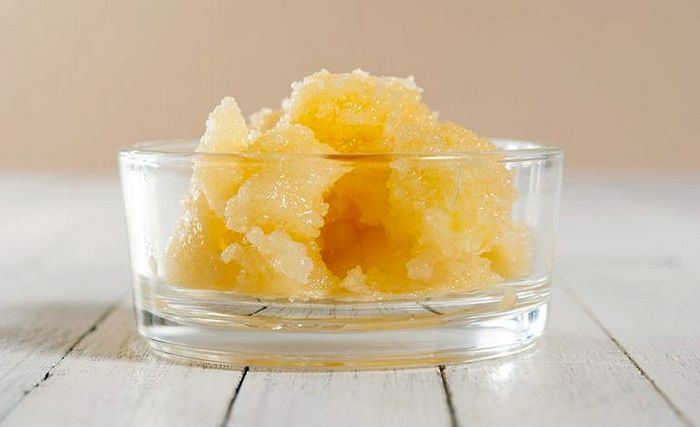


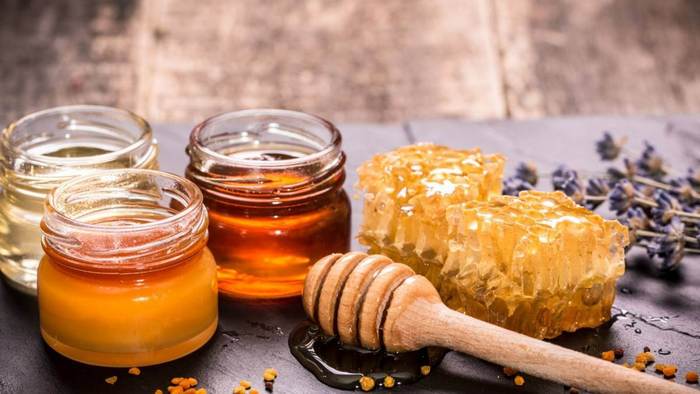

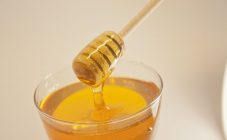
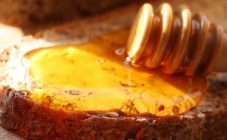
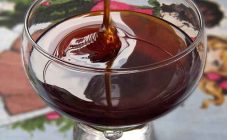
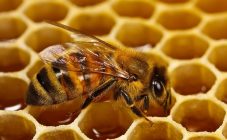
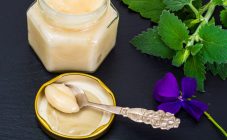
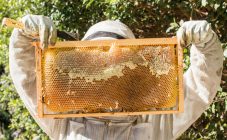







An interesting article, I also always wondered whether honey should be sugar-coated, since I buy it on the Internet on all sorts of different sites, for example, on info bear ru or other similar ones and I don't know if it's good that it is sugar-coated or bad) Now I'll know what's good)